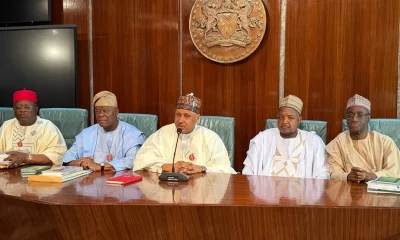The World Bank has warned that Nigeria and other developing countries risk entering debt crises due to rising interest rates and slowing global growth, noting that about 60% of the poorest countries are already at high risk of debt distress or already in distress.
According to the World Bank in a report released on Wednesday, the poorest countries eligible to borrow from the World Bank’s International Development Association (IDA) now spend over a tenth of their export revenues to service their long-term public and publicly guaranteed external debt.
The report showed that Nigeria’s external debt was $18.8 billion in 2010, but rose to $76.2 billion last year. Ripples Nigeria gathered that in 2010, $2.58 billion was obtained from International Monetary Fund (IMF) credit and Special Drawing Rights (SDR), against $9 billion in 2021.
It was learnt that at the end of 2021, the external debt of Nigeria and other low and middle-income economies totaled $9 trillion. This is more than double the amount a decade ago, according to the World Bank.
READ ALSO: Debt stock of developing economies rises to $9trn – World Bank
At the end of last year, $46.2 billion debt-service payments on long-term public and publicly guaranteed external debt was tied to IDA-eligible countries, but this amount is projected to rise to $62 billion in 2022.
It was disclosed that China will account for 66 per cent of the debt-service payments to be made by IDA countries on their official bilateral debt, “At the end of 2021, IDA-eligible countries’ debt-service payments on long-term public and publicly guaranteed external debt totaled $46.2 billion—equivalent to 10.3% of their exports of goods and services and 1.8% of their gross national income (GNI), according to the report.
“Those percentages were up significantly from 2010, when they stood at 3.2% and 0.7% respectively. In 2022, IDA countries’ debt-service payments on their public and publicly guaranteed debt are projected to rise by 35 percent to more than $62 billion, one of the highest annual increases of the past two decades.
“China is expected to account for 66% of the debt-service payments to be made by IDA countries on their official bilateral debt.”
Commenting on the rising debt-service, World Bank Group President David Malpass said, “The debt crisis facing developing countries has intensified,” adding that, “A comprehensive approach is needed to reduce debt, increase transparency, and facilitate swifter restructuring—so countries can focus on spending that supports growth and reduces poverty.
“Without it, many countries and their governments face a fiscal crisis and political instability, with millions of people falling into poverty.

 Business7 days ago
Business7 days ago
 Business1 week ago
Business1 week ago
 Latest2 days ago
Latest2 days ago
 Business1 week ago
Business1 week ago
 Business1 week ago
Business1 week ago
 Business1 week ago
Business1 week ago
 Politics1 week ago
Politics1 week ago
 Latest3 days ago
Latest3 days ago

